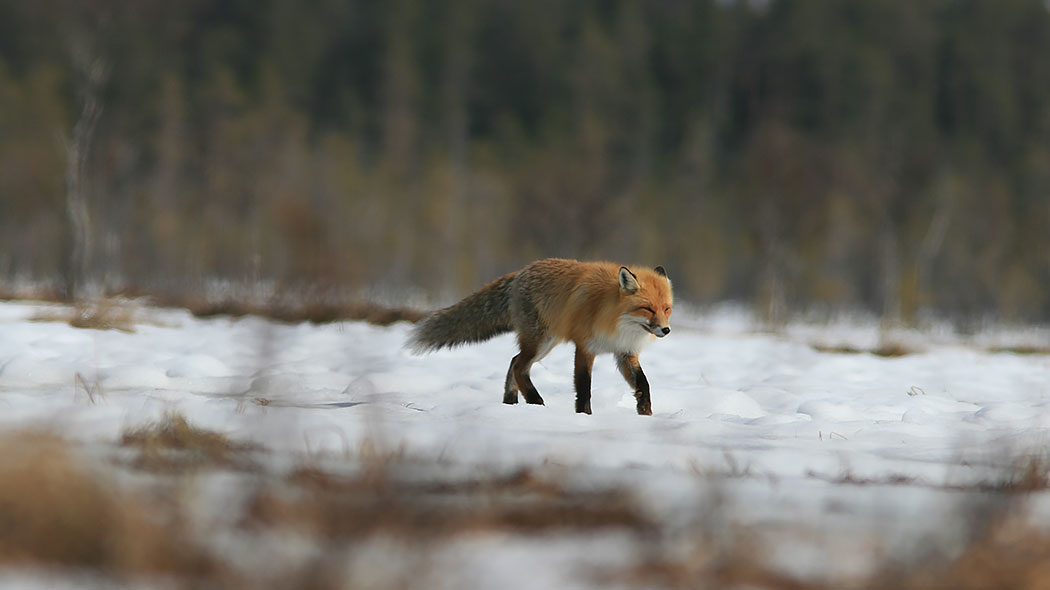Natural Features of Hossa National Park
All hiking trails are open in Hossa after the storm on 06/29.

Julma-Ölkky Canyon Lake was formed by the Ice Age

There are traces of the Ice Age in Hossa. A formation consisting of several eskers runs through the area, including kettle holes and kettle-hole ponds.
Eskers and mire nature
Most of the forests in Hossa are pine-dominated and fairly rugged. There are spruce forests on upper hill slopes. The number of mires is quite high and many of them are small. However, there are a few larger mires in the area.

Hossa is a meeting point for three waterways, and, therefore, there are a large number of flowing waters in the area. The number of lakes and ponds is more than one hundred. The waters are rugged and clear, except for the mire ponds with dark waters.
Lake Öllörijärvi is one of many kettle holes

Amphipods are a treat for fish
The fish in the local lakes and esker ponds enjoy an exceptionally versatile crustacean diet. The crustaceans thrive in waters into which large volumes of groundwater bring plenty of oxygen.

Matsutake and other forest delicacies
The species living in the Hossa National Park are characteristic of the Kainuu region, indicating the northern location. There are features of Lapland in the plant and bird species of Hossa. The marsh Labrador tea thrives on mires and heaths, and the slurping sound of the brambling is part of the spring. There are bilberries and lingonberries on heaths, and you can pick cloudberries on the edges of rugged mires in late summer. Mushroom pickers will find mushrooms that thrive in rugged forests, such as ceps and gypsy mushrooms.

“The thrush and the capercaillie sing here”
In winter, you can go skiing in peace and quiet, only accompanied by a curious great spotted woodpecker and a few titmice. White-throated dippers plunge in unfrozen rapids. They start singing their spring song in early spring. You may see the tracks of an otter by a stream bank.
Hossa is located in the reindeer husbandry area, so you will often see reindeer in the area. The elk population is thriving. All large carnivore species have been spotted in the area, but bears are the most permanent dwellers in the area and almost every winter bears hibernate somewhere in the national park.

The author Ilmari Kianto was right: here you can hear the sounds of the song thrush and the capercaillie. Hikers are often followed by Siberian jays. The area boasts whooper swans and bean geese, which thrive in large wilderness areas. Golden eagles and white-tailed eagles have also been sighted in Hossa.
Hossa National Park
- Established 2017
- Area 110 km2










